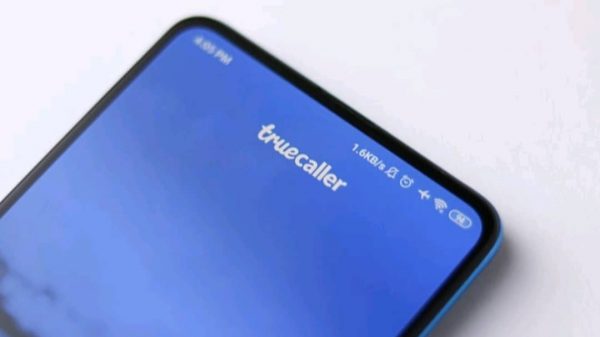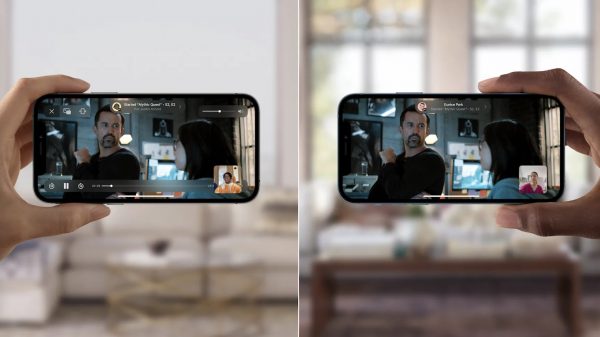The elevator pitch for the Pixel 4 duo is “90Hz screens and dual cameras”. The two flagships come at the tail end of 2019 and represent Google’s views of the current perfect Android phone.
The screens are just about the only thing that sets the two models apart. The Google Pixel 4 features a 5.7” OLED panel with 1080p+ resolution. The XL model gets a larger, sharper 6.3” display with QHD+ resolution. In both cases, the aspect ratio is a clean 19:9 – there are no notches to complicate UI layout. There is a bit of a forehead that houses a lot of hardware, but more on that later.
The new Smooth Display feature enables 90Hz refresh rate. To save on battery, the display will revert to 60Hz when there’s nothing interesting happening. The screen has HDR support and an Always On mode as before and gets a new Ambient EQ that tracks the surrounding light to optimize the colors on the display for the best viewing experience.
The Pixel 4 XL is equipped with the same camera hardware as its smaller sibling. The main shooter has a 12MP sensor with Dual Pixel autofocus. This camera has optical and electronic image stabilization, plus 1.4µm pixels and a bright f/1.7 aperture. However, it’s the new Pixel Neural Core and Google’s proprietary algorithms that will make the biggest impact on the image quality – not the sensor, lens or ancillary hardware.

The new Pixel Neural Core, the camera app can render HDR+ in real time, showing you an approximation of the result in the viewfinder. This will help you adjust the exposure properly. The Dual Exposure Controls give you manual control over the shadow and highlight rendering. In extreme darkness, the revamped Nightsight can capture up to fifteen 16s exposures if you’re into astrography.
The telephoto camera is new to the Pixel brand. It sports a 16MP sensor (1.0µm) plus OIS and EIS. The focal length is not quite double that of the regular camera, but the Super Resolution Zoom software will try to extend that beyond 2x zoom. The second camera also helps with bokeh rendering (previous models relied just on the Dual Pixel tech).
The main camera tops out at 4K 30fps video capture and a 120fps slow-motion mode at 1080p. Pixels never had the best video quality (though they’ve made up for that with top-notch video stabilization).
There’s a third module on the back, but it’s not a camera it’s a spectral + flicker sensor. There’s no ultrawide angle camera here, even though the Pixel 3 duo had one (on the front, but still).
Speaking of, the Pixel 4 phones have an 8MP selfie camera. What makes it special is the 3D depth sensor (structured light) that is used for secure face unlock (there’s no fingerprint reader anywhere on this phone), plus bokeh in selfies.
Yet another piece of hardware above the screen is the Soli radar – that’s right, radar rather than an optical system. This is more accurate when it comes to tracking hand gestures, but has the unexpected drawback of being disabled in some countries (e.g. Japan).
Anyway, Soli completes the hands-free experience of using a Pixel 4 – you can use it to check notifications or change tracks, for more complex actions you just say “Hey, Google” and talk to the new, updated assistant. Active Edge makes a comeback and you can trigger certain actions by squeezing the phone.
While the screen size is the obvious difference between the vanilla and XL models, the battery capacities are different too. The Pixel 4 gets a small 2,800mAh battery, the XL is much better off with a 3,700mAh battery.
In both cases they support 18W USB Power Delivery fast charging using the included charger. You can use a Qi wireless charger instead, which activates Ambient Mode – it offers at-a-glance info courtesy of the Assistant and turns the phone into a smart display.
We haven’t mentioned the processing hardware yet and there’s not much to tell. The two phones are powered by the Snapdragon 855 (non-plus) with 6GB of RAM. The base models get 64GB of storage, the only upgrade option is 128GB.
There’s no microSD slot or any second card slot of any kind. Instead, you get the usual combo of nano-SIM plus eSIM. The good news is that the support for eSIM by carriers have expanded so it’s almost as good as having a second SIM slot.
The Pixel 4 phones have an aluminum frame with a matte finish. The glass-covered back comes in three different colors: Just Black, Clearly White and the new Oh So Orange. But because the metal frame and square camera island on the back are always painted in black, the latter two options have a dual tone look. Note that Orange is a limited edition.
The phones are IP68 water resistant for extra durability and feature stereo speakers. We’ve come to see these things as standard on Pixels, so no surprises here.
The Pixel 4 phones are already up on pre-order in a number of countries – shipping begins on October 22 in the US and Taiwan and October 28 in Europe. Australia and Canada are getting them first – October 21.
Pricing starts at $800 for the 64GB Pixel 4 and $900 for the 64GB Pixel 4 XL. The storage upgrade is $100 on top of that. You can check out pricing for other markets here.






























































































